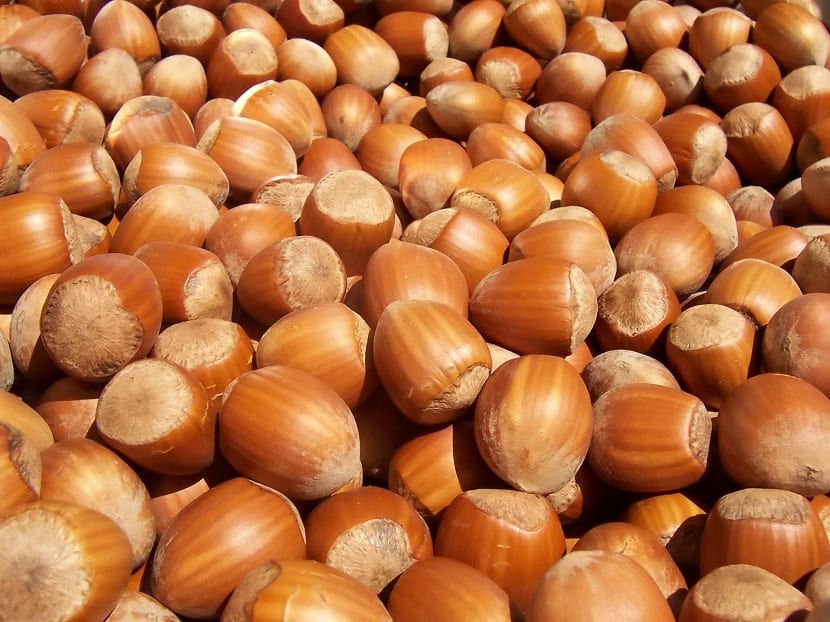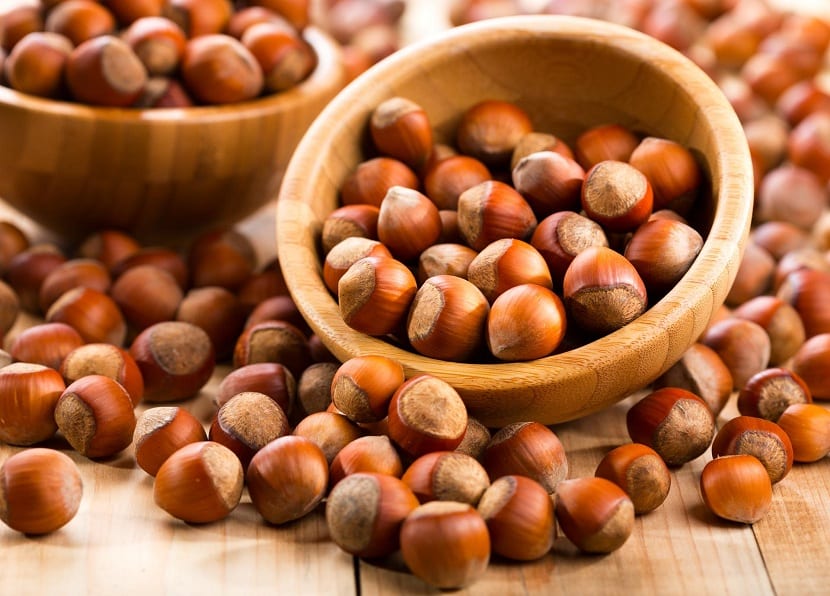
Hazelnut is the fruit of the hazelnut and has been considered for many years as the dried fruit traditionally consumed at Christmas holidays in Spain. However, in recent years, it has been gaining popularity becoming a dried fruit that is consumed throughout the year.
There are numerous types and varieties of hazelnut. Do you want to know them?
Hazelnut characteristics

Hazel, with a scientific name Corylus avellana, belongs to the family of Corylaceae. Hazelnut is a small, rounded fruit with a small point at the end. It has a fairly thick and strong skin and is tan in color. The hazelnut flavor is sweet and it is very rich in oil.
Its consumption possibilities are wide: It can be eaten raw, fried and salted, toasted or as an ingredient in salads. Hazelnut is mostly consumed in products such as nougat (especially at Christmas) and in chocolates. They are also more consumed in cakes, ice cream, liqueurs and even highly appreciated oils with a pleasant flavor.
In Spain, this fruit ripens between the months of August and September. It can be marketed both without shell as with it, and both peeled and not. To preserve them properly, you have to avoid getting wet, since it is a dried fruit with very little water. With the shell they keep for a longer time. If they are put in the refrigerator peeled they can last up to 4 months in perfect condition and if they are frozen up to a year.
Hazelnut types

Depending on the size of the fruit, the shape and the hardness of the shell, there are three main types of hazelnut.
The first are hazelnuts that grow grouped in bunches and have a round and more voluminous shape. On some occasions they can be seen striated. These hazelnuts belong to the subspecies Corylus avellana racemosa Lam.
The second variety of hazelnut is acorn-shaped, cone-shaped with a narrower base and a pointed apex. It can be variable in size and its shell is not very hard. It belongs to the subspecies Corylus avellana glandulosa Lin.
Finally we have the variety that belongs to the subspecies Corylus avellana maximum Lam. This hazelnut is globose and round, quite thick and with a harder shell. It is commonly known as Neapolitan hazelnut.
Nutritional contributions
Although there are different types of hazelnuts, they are all an important source of food for our body. They have unsaturated fat, high in protein, carbohydrates, vitamin E, folate and the B vitamins, pantothenic acid and biotin. Vitamin E is a strong antioxidant and free radical scavenger of the body. This helps us prevent some types of cancer.
Description of some varieties

Next we are going to describe some varieties of hazelnuts.
- Bold. This hazelnut is small in size, with a hard shell and is found in groups of three or four. Productivity is high and fruiting is early. Its origin is Spanish and it is protected by the Denomination of Origin "Avellana de Reus".
- Fertile of Coutard. This type of hazelnut is thick in size and has a thicker shell. Found in groups of two or three. Productivity is very good with fast fruiting and late maturation in late September. Its origin comes from an old French variety.
- Ennis. This variety is very thick in size, often isolated, and has a medium thick skin. The productivity is very good and its fruiting is quite fast, although it matures late. Its origin is from the United States.
- Tonda di Giffoni. The fruit is quite large with a thick skin. Productivity is high with early fruiting, but late maturation. It comes from Italy.
In Spain, the mainly cultivated variety is Negret, although the plantations of 'Pauetet' and the Italian 'Tonda di Giffoni' are increasing. In some areas of northern Spain, such as Navarra, the American variety Ennis is also being planted. In other areas of Spain, the Amandi, Casina, Grande, Espinaredo and Quirós varieties in Asturias, Segorbe in Castellón, and Común de Álava in the Basque Country.